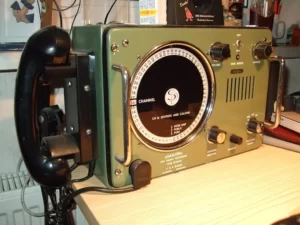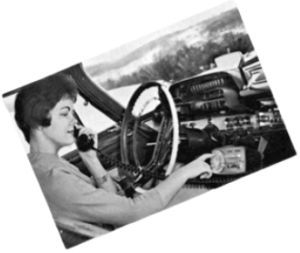Wireless communication has undergone several generations of development, each marked by advancements in network standards, multiple access systems, and transfer speeds. These changes have brought about significant improvements in the way we communicate and connect with each other.
Before the emergence of the first generation (1G) of cellular networks, there was a technology known as “0G” that paved the way for the modern cellular networks we use today.
In this article, we’ll explore everything you need to know about 0G technology, which is an early wireless communication technology used in mobile radio telephones before the emergence 1G cellular networks.
What is 0G Technology?
0G technology is the pre-cell phone mobile telephony technology that relies on analog communication for the transmission of signals from the transmitter to the receiver. This technology was first introduced in the 1940s and 1950s, and since then, a lot of other network generations have evolved. 0G is usually referred to as pre-digital communication because all of its network technology uses analog systems to transmit signals.
0G was used mainly in mobile radio telephone systems, which allowed users to communicate wirelessly through a network of base stations and transceivers.

Source: medium.com
The initial 0G technology suffered from low efficiency and security vulnerabilities that allowed easy hacking. However, subsequent improvements to the technology using low-power wide-area networks (LPWAN) have helped the system become more secure.
Technologies Used in 0G system
1) MTS (Mobile Telephone System)
MTS (Mobile Telephone System) is one of the earliest 0G network technology. It was first introduced in the United States in the late 1940s and provided wireless communication over a network of base stations using analog communication signals.
MTS found application in the early mobile radio phones, which utilized push-to-talk (PTT), a technology that allows users to communicate with each other just like in a walkie-talkie. When a user wants to send a message to another, he would have to press and hold a button in order to send a message. When he wants to receive an incoming message, he needs to release the button.
MTS is a half-duplex system, meaning that only one person can talk at a time. It operated on the VHF (very high frequency) and UHF (ultra high frequency) bands, providing long-range communication with a limited number of channels.
While MTS was an important step towards mobile communication, it had limitations, such as limited capacity and poor audio quality.
2) IMTS (Improved Mobile Telephone Service)
IMTS (Improved Mobile Telephone Service) is another 0G technology that was introduced in the United States in the 1960s.
It was an improvement on MTS, offering better call quality and more channels for communication.
Just like MTS, IMTS operated on the very high frequency (VHF) and ultra-high frequency bands and used analog communication signals to transmit voice and data.
MTS utilized a full-duplex system. This means that both parties could talk simultaneously, and it offered features such as call forwarding and automatic redial.
IMTS was primarily used by businesses, government agencies, and emergency services, and it remained in operation until the early 1980s.
3) AMTS (Advanced Mobile Telephone System)
AMTS (Advanced Mobile Telephone System) was another 0G technology developed in the United States in the 1970s.
AMTS improved IMTS by offering more advanced features and better call quality.
AMTS operated on the UHF (ultra high frequency) band and used analog communication signals to transmit voice and data. It was a full-duplex system that could support multiple calls simultaneously, and it offered features such as call forwarding, call waiting, and conference calling.
AMTS used a full-duplex communication mode, which allowed both parties to talk simultaneously (similar to a regular phone call).
4) OLT (Offentlig Landmobil Telefoni)
OLT (Offentlig Landmobil Telefoni) is a 0G mobile radio telephone system that was introduced in Norway in the late 1960s.
It was a public land mobile system that allowed users to make mobile phone calls from their vehicles using analog communication signals that were transmitted over the VHF (very high frequency) band.
OLT was mainly used by businesses and government agencies, and it remained in operation until the early 1990s.
5) MTD (Mobile Telephony system D)
MTD (Mobile Telephony System D) is a 0G technology that was introduced in Sweden in the 1960s. It was the first mobile phone system to be commercially available in Sweden. It used analog communication signals transmitted over the VHF (very high frequency) band.
MTD allowed users to make mobile phone calls from their cars and offered limited features compared to later mobile telephone systems. MTD remained in operation until the early 1980s, after which it was replaced by more advanced mobile telephone systems.
6) LPWAN (Low-power wide area networks)
LPWAN (Low Power Wide Area Network) is a wireless technology that was developed in 2009 by the French company Sigfox. It allows the transmission of small amounts of data over long distances while consuming minimal power. It is commonly used for Internet of Things (IoT) applications such as smart cities, asset tracking, and environmental monitoring.
While the early 0G technologies had issue of security, LPWAN technology demonstrated the secure transmission of data.
0G Network as Integral Part of 0G Technology
Initially, 0G technology was the collective term used to refer to the wireless communication systems that were developed in the mid-20th century. These systems, such as MTS, IMTS, and AMTS, used analog radio signals and were primarily designed for mobile voice communication.
However, in recent years, the term “0G network” has been used to refer to low-power wide area networks (LPWAN) designed for IoT applications. Sigfox is one of the companies that developed 0G technology for this purpose.
The 0G network powered by Sigfox is designed for low-cost, low-power, and low-data-rate applications. It uses a proprietary communication protocol and is optimized for applications that require low bandwidth and long battery life, such as smart meters, sensors, and other IoT devices.
Applications of 0G Technologies
In the early 1970s, 0G technology found applications in many first-generation mobile telephony systems used in different countries. Today, 0G technology has been developed into a 0G network, which refers to low-power wide area networks (LPWAN) designed for massive IoT applications.
1) Autoradiopuhelin (ARP)
Autoradiopuhelin is a Finnish term that translates to “car radio telephone” in English. It refers to the first generation of mobile telephony systems that were introduced in Finland in the 1970s. This mobile telephony system used analog communication signals transmitted over the VHF (very high frequency) band.
The Autoradiopuhelin system allowed users to make mobile phone calls from their vehicles and was mainly used by businesses and government agencies. Also, individuals who needed mobile communications while on the go adopted this system.

At its early stage, ARP used the half-duplex mode of transmission, but later on, full-duplex car phones that enabled transmitting and receiving voice at the same time were introduced.
The ARP system operated using the 150 MHz frequency, utilizing 80 channels on the 147.9–154.875 MHz band. The transmission power varied between 1 and 5 watts.
ARP was the first mobile telephony system to experience rapid success. The network, which was launched in 1971, reached 100% geographic coverage in 1978 with 140 base stations. By 1977, ARP already had 10,800 users.
After the service reached its peak of 35,560 users in 1986, the network became so congested that it was replaced by more modern technology.
2) B-Netz
B-Netz is another first-generation analog mobile telephone network that was introduced in West Germany in the 1970s. It operated on frequencies around 160 MHz and provided mobile phone service to customers in West Germany.
Like other 0G mobile telephone systems, B-Netz used analog communication signals to transmit voice calls over the airwaves. This mobile telephone system was used by businesses and government agencies. Individuals who needed mobile communication adopted it because it was relatively small to carry on the go.
3) IoT
Recently, 0G technology has found application in the IoT, where it enables low-cost, low-power, and secure connectivity for a wide range of IoT devices. It achieved this by using 0G networks such as the Sigfox 0G network, which utilizes LPWAN technology that is specifically designed to support massive numbers of IoT devices in an energy-efficient manner.
By leveraging the power of 0G networks, IoT applications can benefit from enhanced connectivity and cost-effective solutions that can facilitate their growth and development.
Conclusion
0G technology is a wireless communication technology that played a crucial role in pre-cell phone mobile telephony. It is the technology used to build mobile radio phones in the early 1940s that were later integrated into a vehicle (a car radio phone).
Today, 0G technology developed into a 0G network by Sigfox now finds application in IoTs. It is used to interconnect IoT devices to form smart cities.
With what we covered in this post, I believed you had gotten enough of 0G technology and how it is improving IoT. If you have any questions, leave them in the comment section below.

I am a passionate Networking Associate specializing in Telecommunications.
With a degree in Electronic engineering, I possess a strong understanding of electronic systems and the intricacies of telecommunications networks. I gained practical experience and valuable insights working for a prominent telecommunications company.
Additionally, I hold certifications in networking, which have solidified my expertise in network architecture, protocols, and optimization.
Through my writing skills, I aim to provide accurate and valuable knowledge in the networking field.
Connect with me on social media using the links below for more insights.
You can contact me using [email protected] or connect with me using any of the social media account linked below


